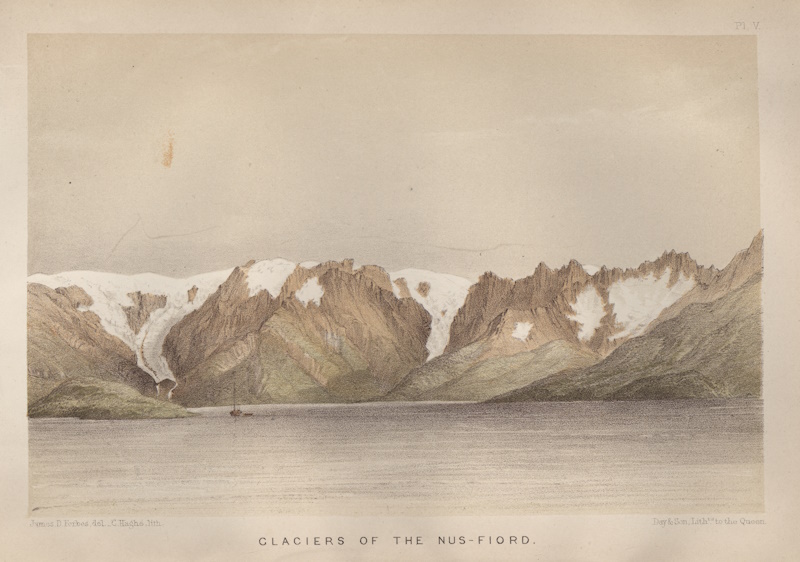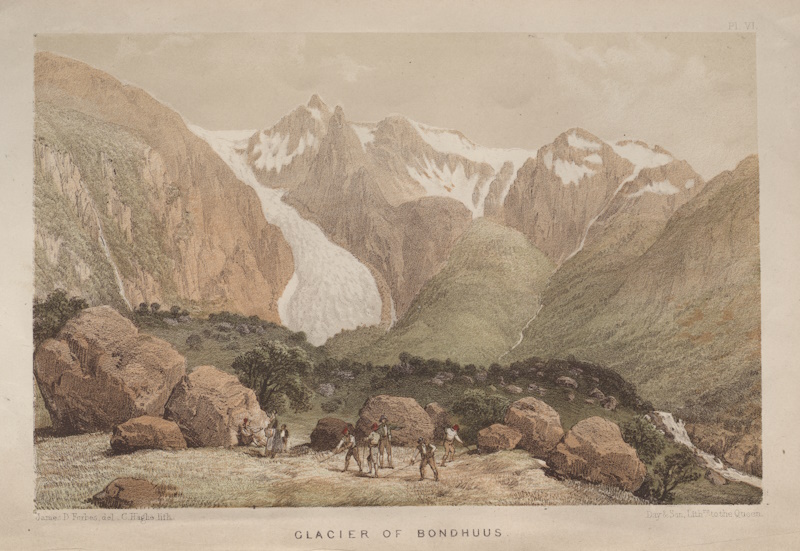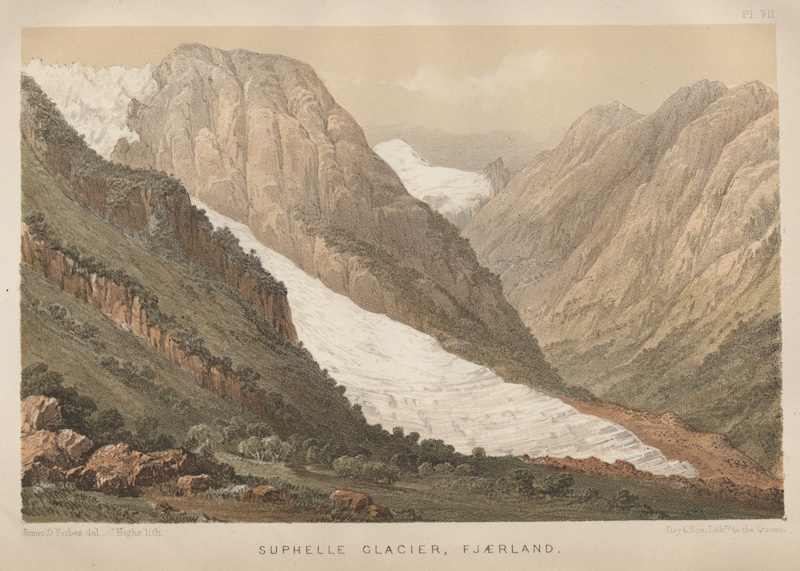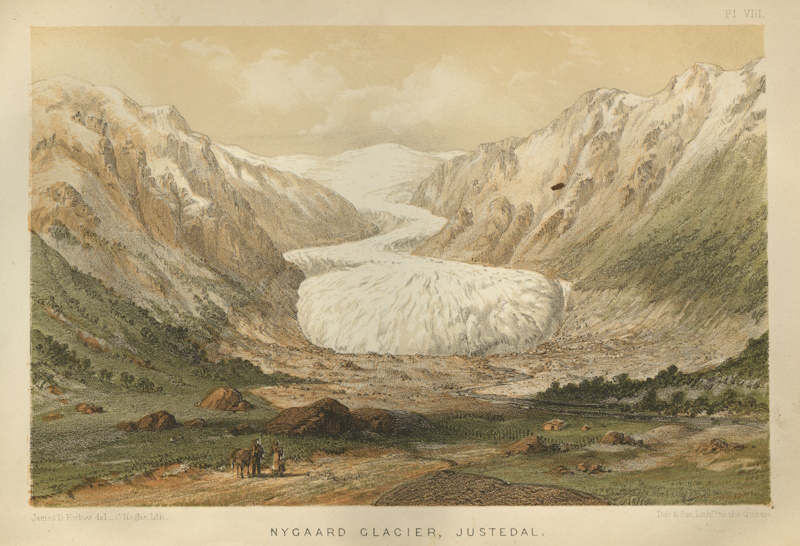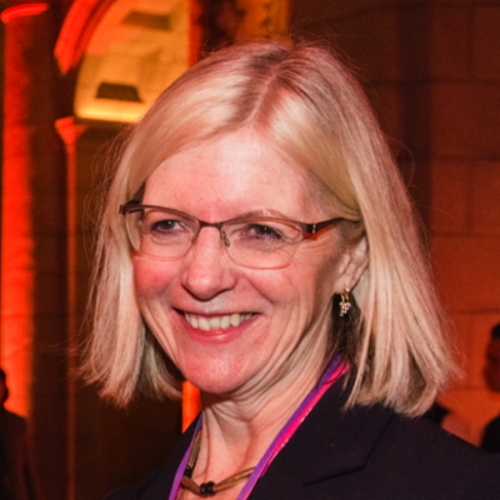Rupert Baker retraces the footsteps of James David Forbes FRS, who travelled to Norway in 1851 on a glacier-hunting expedition.
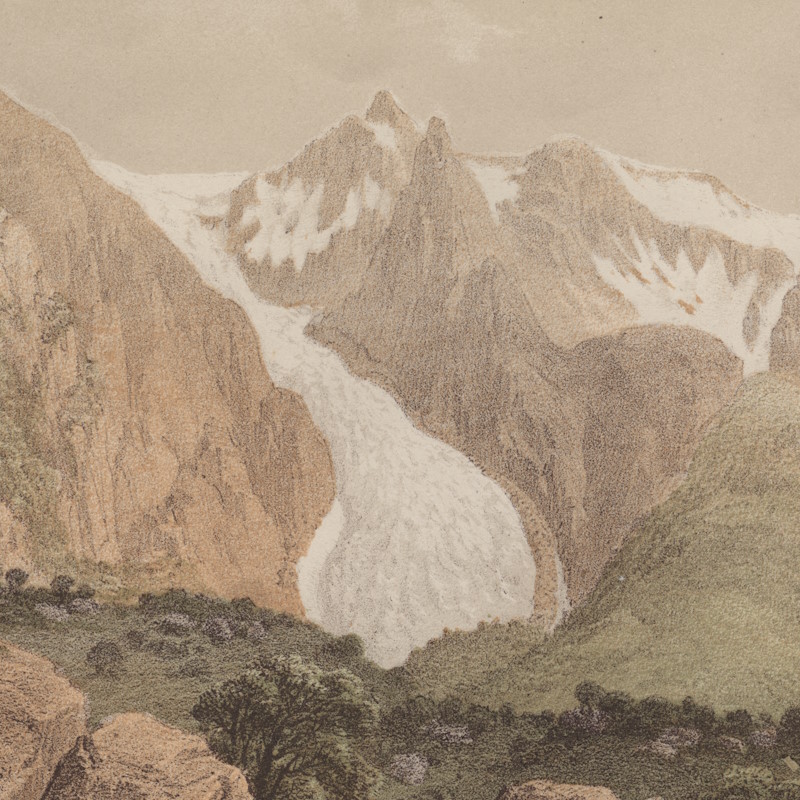
I recently returned from a family walking trip in southern Norway. This post is a little earlier in the calendar than my usual Royal Society-themed holiday blogpost (Snowdonia, Pembrokeshire, Switzerland), as we no longer have school-age offspring. Travelling before the schools break up is cheaper in theory, but now they’re both old enough to drink beer, and in Norway that’s not cheap at all.
Anyway, inspired by the impressive mountain scenery we saw on our walks, I’ve been perusing a mid-nineteenth century book from our Library collections. Entitled Norway and its glaciers visited in 1851, and written by the Scottish glaciologist and physicist James David Forbes FRS (1809-1868), the book contains a series of splendid colour lithographs by Belgian artist Charles Haghe which we’ve now added to our Picture Library.
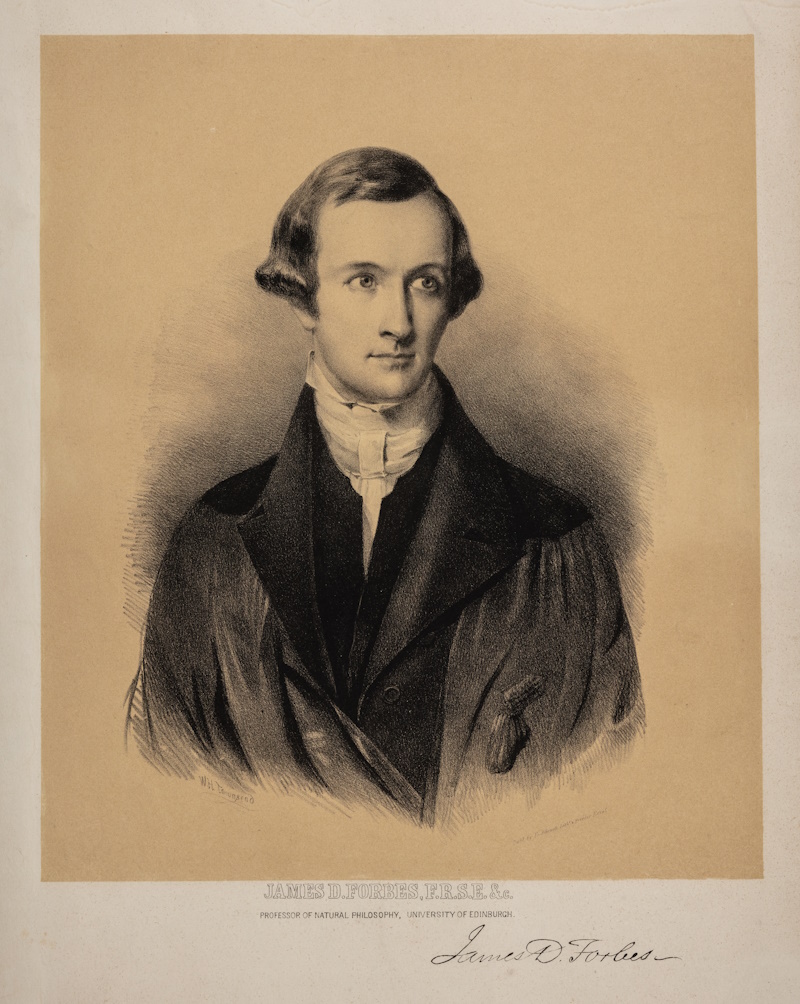 Lithograph of James David Forbes, by William Henry Townsend, 1830s (RS.1270)
Lithograph of James David Forbes, by William Henry Townsend, 1830s (RS.1270)
James Forbes entered the University of Edinburgh at the age of sixteen, and was clearly a precocious youth: he was proposed for membership of the Royal Society of Edinburgh when only nineteen, and became a Fellow of the Royal Society not long after his twenty-third birthday. His election certificate, signed by luminaries including Michael Faraday, Charles Lyell and Adam Sedgwick, describes him as ‘well known by his researches on Meteorological Phenomena’. There are a confusing number of nineteenth-century Forbeses in our list of Fellows, by the way, with James’s son George among them, as well as John, whose walking tour of Switzerland is documented in our recent 'Fellows on holiday' blogpost.
By the time of his trip to Norway, James Forbes was established as one of the leading experts in the physics of heat, garnering a host of Royal Society awards in the process. He received the Rumford Medal in 1838 for his ‘experiments on the polarisation of heat’, and a Royal Medal in 1843 for ‘researches on the law of extinction of the solar rays in passing through the atmosphere’; this latter was also the subject of his 1842 Bakerian Lecture to the Society.
When Forbes was awarded a second Bakerian Medal in 1846, however, the lecture topic he chose was ‘the viscous theory of glacier motion’. His interest in the physics of glaciers went back to a meeting with Louis Agassiz at the 1840 British Association meeting in Glasgow. They travelled together in Switzerland the following year, but fell out over questions of scientific priority.
To develop his theory that glaciers flowed as if they were composed of viscous fluids, Forbes made several further trips to Switzerland in the 1840s, measuring ice velocities across the surface and at various depths in different seasons of the year. His journey to Norway was planned as a reconnaissance for a longer glacier-hunting trip – having suffered a debilitating pulmonary inflammation in 1843, he was understandably cautious about arduous travel in what was, to him, unknown territory.
Setting off from Christiania (now Oslo) on 30 June 1851, Forbes first travelled north by land to Trondheim and then continued by steamer across the Arctic Circle and beyond the Lofoten Islands, noting traces of glacial erosion and getting a first glimpse of glaciers from the ship’s deck with the aid of a telescope. Near the northernmost point of his journey Forbes observed the glaciers of the ‘Nus-fjord’, which he described as having ‘a true alpine character, being outlets of extensive snow-fields whose general level exceeds 2000 feet’:
Returning south by the same steamer and continuing onwards to Bergen, Forbes was thwarted by cloudy conditions in his attempt to view a total solar eclipse (it rains a lot in Bergen, as we discovered during our stay). His glacier-chasing resumed on the return trip to Christiania: a ‘venerable old man’ and his grandson were engaged for a guided tour of the moraines and glacier of Bondhuus, shown below and described by Forbes as ‘thoroughly well-formed, and of as fine a blue in the cavities as I almost ever saw’:
The next icy port of call was the Suphelle, which Forbes was particularly keen to visit as it approaches closest to sea level of all the glaciers in southern Norway. ‘I had made no slight exertion to reach this spot’, Forbes wrote, ‘visited by, I believe, a very few Norwegian tourists, and perhaps a German artist or two’:
Finally, on 8 August, Forbes and his companions set off on horseback for the magnificent Nygaard glacier, ‘which is of great length, descends the valley […] by angular zigzags, resembling a carefully constructed but gigantic highway, embanked at the turnings by its own moraines’:
Sadly, as noted by Frank Cunningham in his 1990 biography of Forbes, the observations of that day – which included some spectacular roches moutonnées – turned out to be ‘his last field work of consequence not only [in Norway], but as it turned out, anywhere’. Back in Edinburgh, Forbes’s lung troubles returned with a vengeance in autumn 1851, and although he was to live for another seventeen years, he never fully returned to health, ruling out any more long journeys to the glaciers of Europe.
Forbes initially considered his Norwegian notes insufficient to be worked up into book form and planned to write a single scientific paper setting out his observations. However, he was rather fond of his sketches, and ‘did not think it reasonable to request any of our publishing societies to give these illustrations in the careful and expensive style which I thought requisite.’ He therefore engaged the Edinburgh publishing firm of Adam and Charles Black to bring out his book in 1853, with Forbes’s preface encouraging others to pick up the baton, urging
‘our fellow labourers to do in our stead what we would gladly have done but for some inevitable want of health’.
The phrase ‘be careful what you wish for’ seems appropriate here: the theory of glacier movement was followed up by ‘fellow labourers’ such as John Tyndall FRS, and a long and icy exchange of papers ensued between the two. All far too complicated to go into here, but there’s a quick summary in this article if you’re interested. As a non-glaciologist, I’m just glad that Forbes’s sketches were immortalised in Haghe’s lovely lithographs, and his book is certainly making me dream of a return to Norway – those Lofoten Islands do look rather tempting…

